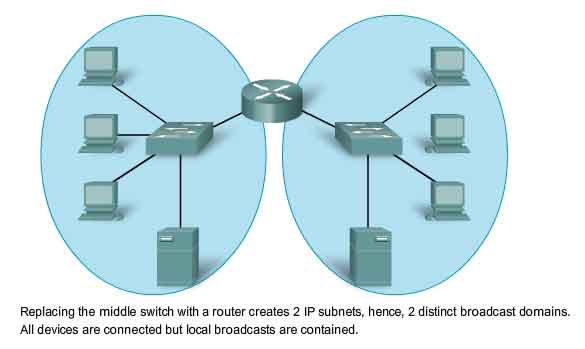To make sure preferences are cleared... have a look back at my directions in post #20. The directions are not super explicit as I assumed you could get into control panel, find network and sharing center, click on your network connection under active networks, click on properties, click on Internet protocol version 4 and then click Properties. At that point I believe you will see the first radio button selected as Obtain an IP address automatically. That is what you want. I also believe you will see another tab that says Alternate configuration. If you click on that tab, it is my belief that someone has set up preferences there. What you want to do is click on Automatic Private IP address then OK your way out. This should allow your network to set things as it thinks they should be.. and I'm hoping that DHCP will then assign you an IP in the 192.168.x.x range with the rest of your devices.
#31

Posted 06 August 2016 - 11:39 AM
------------------------------------------------------------
Microsoft MVP 2010-2014
Register to Remove
#32

Posted 06 August 2016 - 12:09 PM
#33

Posted 06 August 2016 - 12:56 PM
Hm... The log you posted back in post #10 shows this:
IPv4 Address. . . . . . . . . . . : 10.0.0.2(Preferred)
It has been my belief that the IP address with the (preferred) tag shows a preferred setting on the Alternate Configuration page. Obviously, that's not true. We are way beyond my knowledge now. I cannot understand why you are being assigned an address in a different network. It's a puzzler. If I come up with some idea - I'll share it, but it sounds unlikely that I'll have any useful input.
------------------------------------------------------------
Microsoft MVP 2010-2014
#34

Posted 06 August 2016 - 01:02 PM
That's perfectly fine Tomk. We live and we learn. What if I print my IP settings again? Maybe they've changed since I last did it (I've reset the device a handful of times) It could be anything, because the technician who set up my network (years ago.. I wasn't into computers then so I didn't know) set the encryption to WEP when WPA was available... he put the device in a hot bonus room on the second floor... he was bad. So maybe it was something he configured I don't know what. I just know basic support stuff haha
PS. I only have the one network..
PPS I renewed the IP... and now my adapter has that 10.0.0.4 address from before. Maybe it was set up in a weird way where my adpter was...accepting traffic as well? I don't know but I found that weird. Now that I ping to 10.0.0.1 I get a reply from it, not from 10.0.0.4..
Edited by Cactuscobbler, 06 August 2016 - 01:35 PM.
#35

Posted 06 August 2016 - 01:43 PM
Yeah... the term "network" as I used it is a bit confusing. I'm referring to IP network. Let's say you were a big company. You would have a company network that would encompass all the devices. But for securing reasons, you might want a billing network, a shipping network, and a production network.
You could set IP's to something like... 10.0.1.x to devices in the billing department, 10.0.2.x to devices in the shipping department, and 10.0.3.x to production devices. All are in the company network and can be configured to use the same printers, AP's, and even data server... but the individual devices on each of the 3 networks (distinguished by the different number in the third place of the IP address) can only "see" devices on their network. They can actually use shares on the wider network... but can't "see" them. This picture isn't exactly right, but perhaps depicts what I'm trying to say:

As I said, this isn't exactly right but you can see that there are two subnets. In your case, you one device (the "problem" one) is on the 10.0.0.x subnet (call it the one on the left) and the rest of your devices are on the 192.168.x.x subnet. Both subnets access the internt through the same router/gateway... but they would not be able to see each other.
If you are willing, I'd like to see an ipconfig /all from one of the computers than can see each other - and then perhaps a new one from the problem device.
------------------------------------------------------------
Microsoft MVP 2010-2014
#36

Posted 06 August 2016 - 01:51 PM
I thought you meant a regular network... the kind where common computers share a gateway to the internet. That's the thing though. I have it configured like that, but tomk doesn't it make sense that the 3in1 have a lower bigger subnet mask? (as in.. allows more networks) since it's what connects me to the internet? I might be confused, so sorry if I confuse you, but that's what I'm thinking.
There is no problem device... except the 3in1.. which I doubt has a command line haha. It's just that my hosts (wii console and laptop) sometimes have issues connecting. I can do an Ipconfig /all gor my laptop though if you'd like (I also have a desktop upstairs... frankly I don't care about it but I'm just letting it be known in case it could be handy troubleshooting with 2 hosts)
#37

Posted 06 August 2016 - 02:11 PM
Perhaps I've confused myself as to what you are actually doing.
I thought you got a new laptop. It connects to the internet... but doesn't see the other devices on your home network. I assumed that these other devices were also computers of some sort.
Are you saying that the devices that the laptop can't see is just your wii?
And not to confuse you any more... but the address range of a subnet doesn't make it "bigger" or "smaller". No matter what subnet is being used, each octet (the numbers separated by decimal points) must be between 0 and 255 inclusive. So dhcp can assign a maximum of 256 individual, separate, exclusive addresses. These all will occur on the local or Lan side of the router. Your router is connected to your ISP's network, and will have a different IP address that it gets from your ISP so that it is part of your ISP's network... which allows you to connect to the "huge" network known as the world wide web.
------------------------------------------------------------
Microsoft MVP 2010-2014
#38

Posted 06 August 2016 - 02:22 PM
#39

Posted 06 August 2016 - 03:54 PM
It is unlikely that you have multiple networks. As far as I know, DHCP will assign addresses in only one range. If none of your devices relate to each other... then I don't suppose it really matters.
How does one computer "see" another? One way is to simply click on My Computer and look in the left pane. Probably the last item in the left pane is Network. If you click on Network it will open Network and file sharing and show all the devices on your lan (local area network). So on mine, I can see other computers, printers, and my smart TV. If your not sharing information between devices... it doesn't matter.
Where I went wrong in my thought process was that I thought when you couldn't "ping anyone", you were talking of other devices in your lan. I'm thinking now that by anyone, you were talking places on the web like google, yahoo, amazon, etc. That being the case, I know longer think it has anything to do with your lan. That sounds more like a DNS problem to me.
Anyhow, I think I'm just confusing things. Digerati and Ztrucker have forgotten more about computers in the last week than I have ever known. Hopefully they will be able to help you get things set right... if there is really anything to set right. I'm not even sure that there is an issue anymore.
------------------------------------------------------------
Microsoft MVP 2010-2014
#40

Posted 06 August 2016 - 05:25 PM
Register to Remove
#41

Posted 06 August 2016 - 06:01 PM
You are correct. Technically you have a lan as all of your devices connect to the internet through the same gateway. I believe a true network is when the devices are interrelated. They share resources such as data storage (utilizing what is known as network shares) or access to printers, scanners, camera's... pretty much any peripheral.
I've always networked my home computers so that we all could print through the one printer I have without having to go physically hook the printer to the computer. Also, I could play computer games with my kids (not over the internet) that required the computers to be networked together so that they could interrelate to each other... thus making the game possible.
------------------------------------------------------------
Microsoft MVP 2010-2014
#42

Posted 06 August 2016 - 06:11 PM
#43

Posted 06 August 2016 - 08:26 PM
I agree. It's the finding the answer that is the fun part. When something just works... but you don't know why... it is less than satisfying.
------------------------------------------------------------
Microsoft MVP 2010-2014
#44

Posted 07 August 2016 - 05:06 AM
#45

Posted 07 August 2016 - 08:35 AM
QuoteAs far as I know, DHCP will assign addresses in only one range.
That's how I know it. But computers on the same network don't have to "relate" or "see" each other to be on the same network. And of course, seeing is totally different than accessing too.
Basically, everything on your side of the gateway device (typically the modem, or a router) is your network - your local area network (LAN). You can certainly have subnetworks within networks by adding routers. A router technically only has 2 I/O ports, one on the "wide area" or Internet side and 1 on the "local" side and the router is used to connect or isolate the two networks. Most routers also have an integrated 4-port Ethernet switch on the "local" side of the router connected internally to that local I/O port.
When I had my repair business in my home, I had a second router on my network to create a 2nd network to my shop. I did this to setup an isolated network for the shop to prevent an infected computer coming in for repair from attacking one my personal computers on my home network. The 2nd router was assigned an IP address by the 1st router and I could have two computers (one on each network) with the same IP address with no problems - because the 2nd router isolated them even though both then accessed the Internet via the same modem.
I wish I knew what was going on with your network. I'm afraid Tom has given me more credit than I deserve. Note that setting up a server can be as simple as opening up sharing on that computer. I did this with an old XP computer, repurposing it into a NAS (network attached storage) to use as a backup server for my other computers. But because XP is no longer supported, I blocked Internet access for it in my router.
And setting up a network printer is easy too - especially if the printer is already network ready. In fact, it is super easy with Windows 10 as it will scan your local network and automatically set it up for you in most cases.
 Bill (AFE7Ret)
Bill (AFE7Ret) Freedom is NOT Free!
 Windows and Devices for IT, 2007 - 2018
Windows and Devices for IT, 2007 - 2018Heat is the bane of all electronics!
─────────────────────
Also tagged with one or more of these keywords: ping, internet
1 user(s) are reading this topic
0 members, 1 guests, 0 anonymous users







![Google Chrome keeps connecting to an unknown proxy. [Solved] - last post by ken545](https://forums.whatthetech.com/uploads/profile/photo-19436.gif?_r=1383237793)


